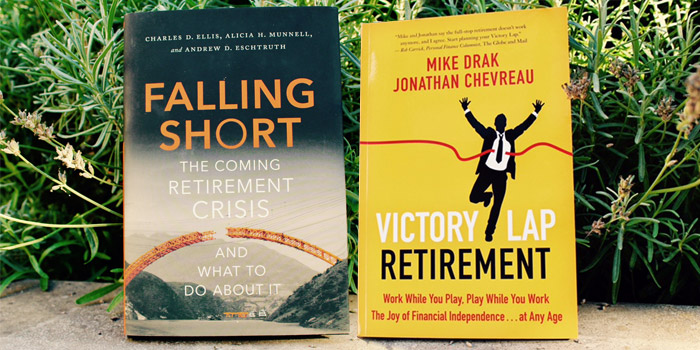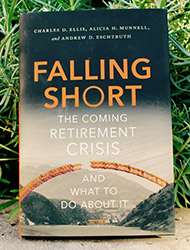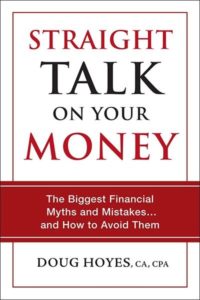 There are lots of unknowns when it comes to retirement planning. Most of us focus on how much we need to save for retirement without giving much thought as to how much we’re going to spend in retirement.
There are lots of unknowns when it comes to retirement planning. Most of us focus on how much we need to save for retirement without giving much thought as to how much we’re going to spend in retirement.
A $1 million dollar nest egg can provide you with $30,000 to $40,000 to spend each year with reasonable assurance that you won’t run out of money. But if your ideal retirement lifestyle costs $60,000 per year, your million-dollar portfolio won’t be enough to last a lifetime.
Once you determine your magic spending number, the rest of the variables start falling into place. The earlier you can identify the amount of income you need to live the retirement you want, the easier it is to make your retirement plan and adjust course, if necessary.
Let’s say you’ve analyzed your retirement income needs and find, based on your current financial situation, that you won’t be able to fully fund your desired lifestyle. What to do?
Here are five retirement planning options to help you adjust course and reach your retirement goals:
1.) Reduce your lifestyle
A $60,000/year retirement might be out of reach based on your current situation, but maybe reducing your goal to $45,000/year can still provide a great lifestyle in retirement.
This lifestyle adjustment could mean travelling less often, making sure you retire debt free, downsizing your home, replacing your vehicle less often, reducing your hobbies, or a combination of all the above.
Don’t forget to include government benefits such as CPP, OAS, and/or GIS when projecting your retirement income. It’s worth sitting down with a retirement planner to figure out the best way to draw down your assets and when it makes sense to apply for CPP and OAS.
2.) Work longer
It can be difficult to picture yourself working longer once you’ve got retirement on the brain, but a few extra years on the job can drastically alter your retirement projection.
The longer you work, the more you can save (or add to your pensionable service if you’re so lucky to have a workplace pension). But also the more years you’re working and earning a paycheque the fewer years you have to withdraw from your nest egg.
Are you healthy and willing to grind it out at work for a few more years? If so, you might be able to reach that $60,000/year retirement goal after all.
3.) Earn more return from your investments
This is a tricky one because you might take it to mean investing in riskier assets (i.e. an all-equity portfolio), when in fact you can earn higher returns by reducing the overall cost of your portfolio. That’s the first place to start.
Imagine your $300,000 retirement portfolio is invested in a typical set of mutual funds that together comes with a management expense ratio (MER) of 2 per cent. The cost is $6,000/year but you don’t see the charge directly; instead, it comes off your returns.
Switching to index funds and going the do-it-yourself route might reduce your costs to 0.5 per cent, or $1,500 per year. That’s an extra $4,500/year staying in your retirement account instead of going into the hands of your advisor.
There might also be a case for increasing the risk in your portfolio. Say, for example, you tend to hold a lot of cash in your portfolio: you’re not fully invested. Or you hold a bunch of GICs and other fixed income products.
Dialling up your investment risk to include a portion of equities could help you achieve an extra 2-3 per cent per year. The power of compounding can make a huge difference to your retirement portfolio and holding even a small portion of equities in retirement can help your nest egg last longer.
4.) Save more
This one is so obvious it should be first on the list. If you’re not able to fully fund your desired retirement lifestyle based on your current projections then you need to save more.
Hopefully your final working years can give you the opportunity to boost your retirement savings. Big expenses, such as paying down the mortgage and feeding hungry teenagers, are behind you.
But an empty nest and paid-off home might tempt you to increase your lifestyle now rather than doubling-down on your retirement savings to boost your lifestyle later. That’s fine; see options 1-3.
That said, there’s no better time to enhance your nest egg by maxing out your RRSP contributions, including unused contribution room, and doing the same with your TFSA, in the years leading up to your retirement date.
Be mindful here, though, of strategies to reduce your taxes in retirement. It makes little sense to go wild making RRSP contributions in your final working years without considering how withdrawals will impact taxes or OAS clawbacks in retirement.
5.)Supplement your retirement income
Much like working longer can increase your nest egg, supplementing your retirement income with a part-time job derived from a passion or hobby can prolong the life of your portfolio.
Continue Reading…
 Scott Terrio’s Twitter feed (@CooperTrustee) reads like a financial horror story. Terrio, an insolvency expert at Cooper & Co. in Toronto, uses the 140-character medium to share the multitude of ways seemingly well-off Canadians end up buried in debt and turning to debt consolidation, consumer proposals, and even bankruptcy.
Scott Terrio’s Twitter feed (@CooperTrustee) reads like a financial horror story. Terrio, an insolvency expert at Cooper & Co. in Toronto, uses the 140-character medium to share the multitude of ways seemingly well-off Canadians end up buried in debt and turning to debt consolidation, consumer proposals, and even bankruptcy.






